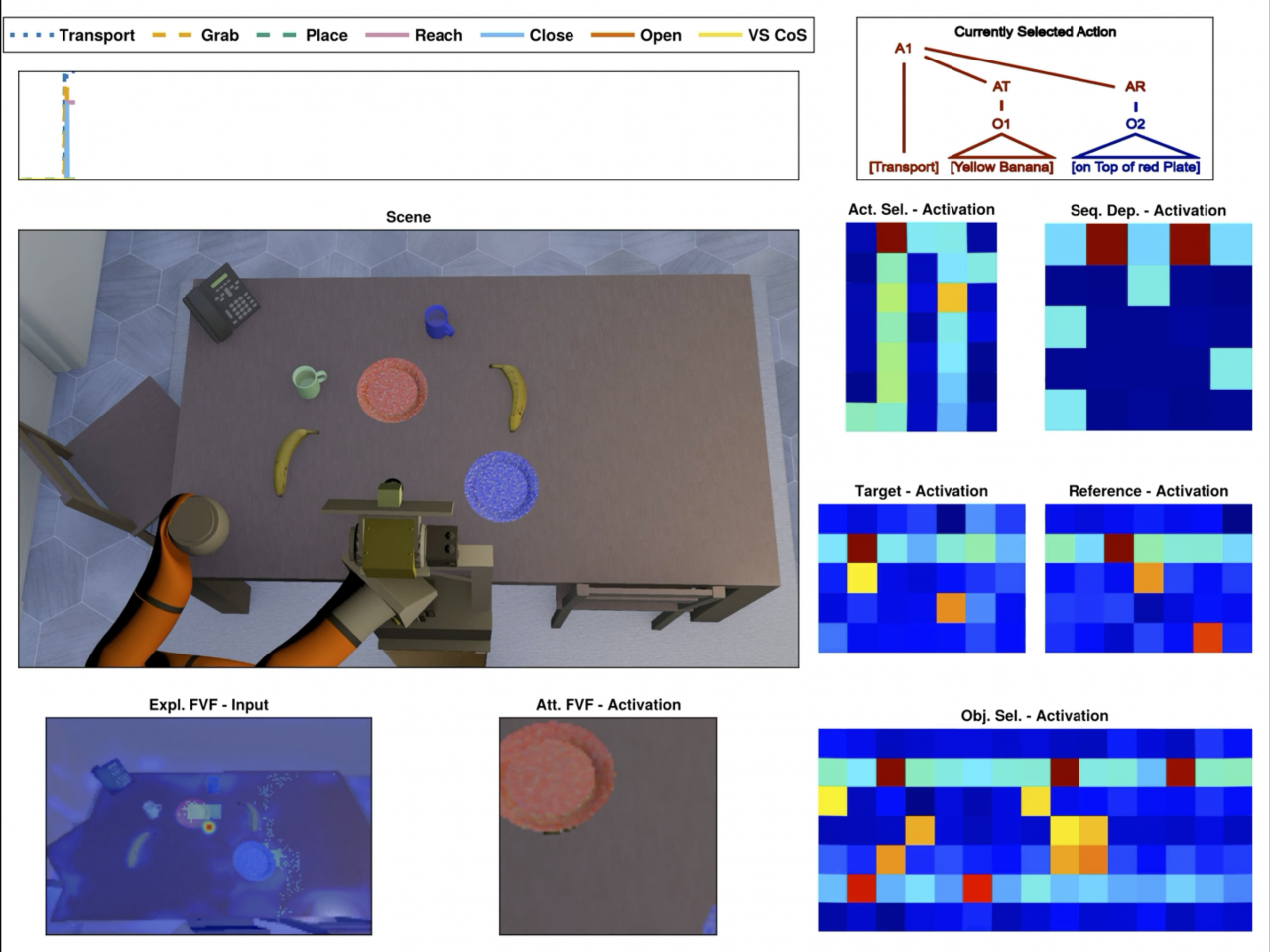What is DFT?
Dynamic field theory provides an explanation for how the brain gives rise to behavior via the coordinated activity of populations of neurons. These neural populations, depicted in the dynamic field simulator below, make local decisions about behaviorally relevant events in the world. For instance, move your mouse above the blue line in the simulator and watch what happens. When you move your mouse high enough, the group of neurons form a local decision—a peak of activation—detecting the location of the interesting event (your mouse movement). When you move to another position along the line, a different local decision forms. Activation patterns in other dynamic fields might be sensitive to other types of information such as color, shape, or even the emotional valence of an event.
Peaks in dynamic fields can be driven by input like your mouse moving; they can also be generated ‘internally’ based on based things that the dynamic field has learned. Moreover, some peaks require input to stay active; other peaks can maintain themselves in a ‘working memory’ state even in the absence of input.
A thought in DFT is an entire pattern of local decisions—peaks—that reach out and ‘talk’ to one another—the green cup of coffee that I want is over there on the left. Thinking in DFT is movement from one pattern of peaks to another. Behaving is when these patterns reach out and connect with sensory and motor systems to, say, pick up the cup. Learning is when memory traces form, increasing the likelihood of returning to a pattern in the future. And developing is shaping these patterns step-by-step through hours, days, weeks, and years of generalized experience.












